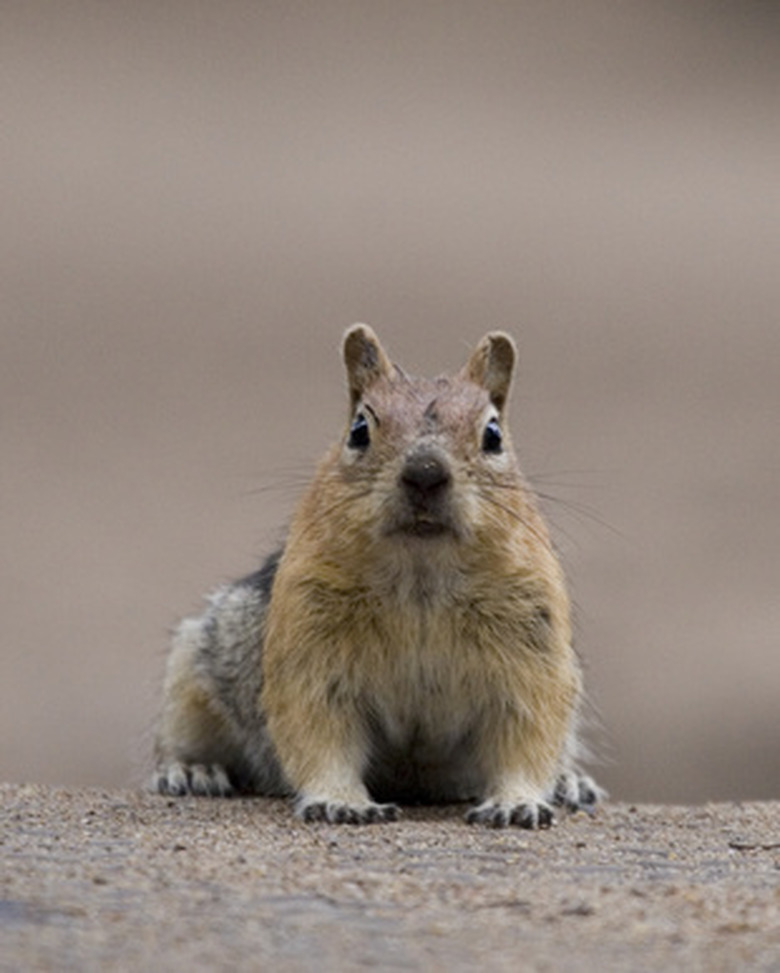How To Keep Squirrels From Damaging Lead Vent Pipes
Squirrels can be cute and fun to watch, until they start causing costly damage to your home. Among their favorite targets are the lead vent pipes many houses have protruding from their roofs. Squirrels like to chew on metal to file their constantly growing teeth. The lead, which is a preferred covering for vent pipes because it's long-lasting and rust-proof, is soft enough for squirrels to chew through. This damage allows water to seep between the vent pipe and your roof and leaks can quickly develop and cause extensive damage. Preventing the damage is much less expensive than repairing it.
Step 1
Remove things like bird feeders, bowls of pet food and open garbage cans, which attract squirrels.
Step 2
Trim branches and limbs, or remove trees that provide squirrels easy access to your roof.
Step 3
Purchase a live trap from a hardware or hunting supply store to trap nuisance squirrels. Place a small piece of bread outside the trap and a larger piece on the trap's treadle, which trips the trap. Transport the trapped squirrel to a wooded area several miles from your home and release.
Protecting the Pipe
Step 1
Fabricate a sleeve out of heavy sheet metal to place over your lead vent pipe by rolling a piece of sheet metal slightly larger than the circumference of your pipe. Another option is to purchase a piece of stove pipe or other galvanized metal pipe to slip over the vent pipe.
Step 2
- Remove things like bird feeders, bowls of pet food and open garbage cans, which attract squirrels.
- Purchase a live trap from a hardware or hunting supply store to trap nuisance squirrels.
Step 3
Secure the roll with metal adhesive.
Step 4
Create a tent-shaped cover by cutting a square about three times larger than the pipe circumference from a piece of sheet metal and bending in the middle to form a 90-degree angle. Attach to the top of the pipe with metal adhesive or sheet metal screws. Leave ends open.
Step 5
Roll a piece of galvanized hardware cloth slightly larger than your pipe and attach with metal wire. Cut a circle to fit the roll's circumference and attach to the top. Slip over your vent pipe to create a squirrel-proof cage for the pipe.
Step 6
- Secure the roll with metal adhesive.
- Slip over your vent pipe to create a squirrel-proof cage for the pipe.
Keeping Squirrels Out of Trees
Step 1
Measure the circumference of a tree that provides squirrels access to your roof.
Step 2
Purchase a piece of sheet metal two or three feet wide and long enough to wrap around the tree trunk, allowing some overlap to accommodate tree growth.
Step 3
Mark the tree circumference measurement on the metal and create holes in the metal with a hammer and nail about a foot apart.
Step 4
Secure the band around the tree, six feet off the ground, with metal wire or sheet metal screws. The band may also be held in place around the tree with bungee cord.
Step 5
Loosen yearly to allow for tree growth.
